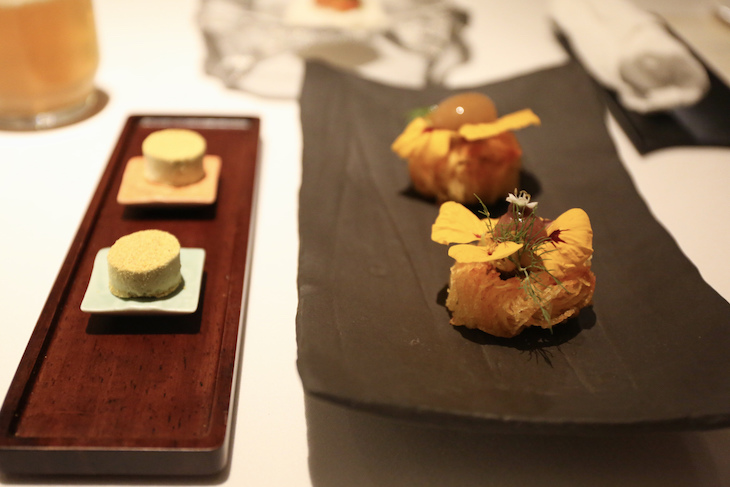
How do you pair a menu filled with emojis? At Gaggan, the restaurant based in Bangkok, Thailand, that has been number one for three years in a row at Asia’s 50 Best Restaurants, the entire 25-course menu is provided as an emoji with simple explanations besides it, such as eggplant cookie, turnip taco, yogurt explosion. While this sounds innovative now, I suspect in ten years, an emoji-filled eclectic menu will not be that unusual.
Several sommeliers work the floor at Gaggan and pairing is no easy feat. Since the menu is filled with challenging ingredients like chilis, black garlic, horseradish and curry, it would be impossible to try to pair one dish, or in this case, one mouthful, with one wine. More and more, sommeliers are looking for versatile wines that can pair with a variety of dishes and deal with the transition from ‘eggplant cookie’ to ‘chilly bon bon’.
Vladimir Kojic, Gaggan’s current head sommelier, says, “I try to steer customers towards white wines. And I am a big fan of Riesling from Alsace or German. We have a lot of light red wines; nothing too heavy because of all the spices in our dishes. If customers want red, I suggest Pinot Noir – it can be from Burgundy or Germany. Also why not Pinot Noir from Victoria [Australia] or New Zealand? Pinot Noir makes up the largest portion of our wine list, about 20%.”
Modern restaurants that prefer to please your palate with small morsels of food, similar to tapas in Spain or dim sum in China, find it challenging to create a wine pairing menu to go along with the small portions. One way is to just drink what you like and leave the wine alone when a dish appears to overwhelm the food flavors; or vice versa, where the wine can overwhelm a delicate, light dish. Sometimes the food can do a solo act – without any wine accompaniment, it can explode with complex flavors on your palate without any wine accompaniment.
There are some foods that can call out for wine – a beef fillet calls out for Cabernet and herb roasted lamb thrives in the company of Syrah or roast goode with Pinot Noir. Other dishes do well without any wine accompaniment because they clearly want to be the star – Sichuan-style hot pot, stinky tofu or century egg with pickled ginger. Wine should be fun, interesting and pairing it with food needs to be flexible and creative.
Kojic says, “At Gaggan, I don’t believe in set wine pairing – one wine with one dish – it doesn’t work here. It is about tailoring the right wines to the group who will enjoy it.” I watched Kojic at work and he does exactly that: He asks questions to see what the guests enjoy drinking and he knows the menu so well that he can recommend a variety of wines, either by the glass or by the bottle, to accompany the meal for at least part of the way. With a 25-course menu, it’s impossible to have just one wine but two or three different wines work well.
Thailand is one country that makes the wine prices and wine duties in China look modest. With 300% wine duty, the cost of wine can be many more times the cost of the food in Bangkok. But the wine culture is still thriving, despite the government’s policies. Gaggan will be opening a wine bar later this year called ‘WET’. This is a unique wine bar that will focus on delicious casual food, created by the head chef Rydo from Gaggan, and good music. While French wines will form the core of the list, Kojic is keen on natural, organic and low-interventionist wines so there will be plenty of natural wines to choose from. Also unique to the wine bar, a selection of wines from Serbia, Croatia, Slovenia and the Czech Republic will also be on offer.
A 25-course meal at Gaggan followed by a late night at WET would be a foodie trip worth flying to Bangkok for.









